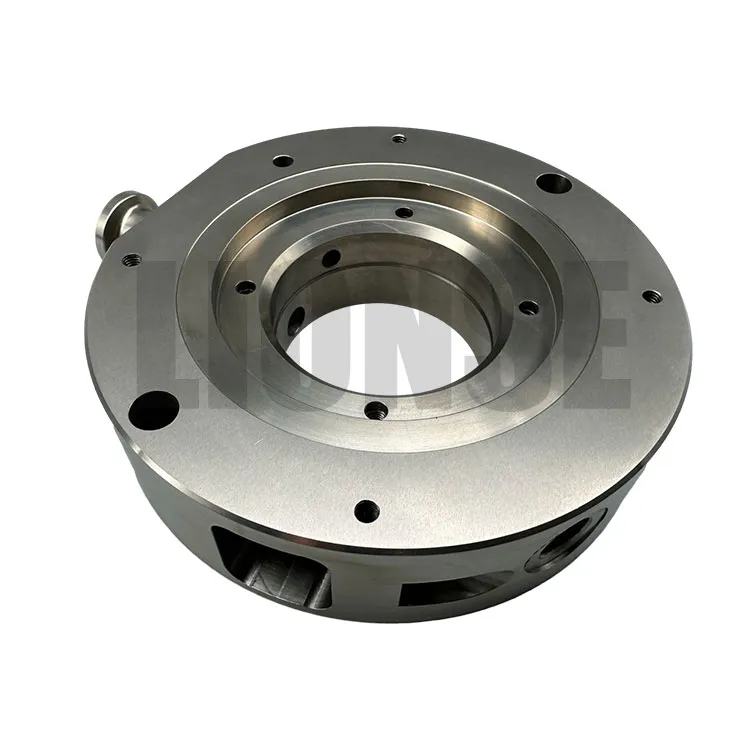Precision Grinding Parts: Achieving High Tolerance and Quality in Manufacturing
2024-08-14
Precision grinding is a crucial process in the manufacturing industry, used to achieve high levels of accuracy and surface finish in various parts and components. Whether for aerospace, automotive, medical devices, or industrial machinery, precision grinding ensures that parts meet stringent specifications and performance standards. In this blog, we will explore what precision grinding parts are, the process involved, their benefits, and their applications.
What Are Precision Grinding Parts?
Precision grinding parts are components that have been manufactured using precision grinding techniques to achieve exact dimensions, tight tolerances, and superior surface finishes. Precision grinding is employed to refine the dimensions and characteristics of parts after initial machining processes, ensuring they meet precise engineering specifications.
The Precision Grinding Process
1. Preparation:
The process begins with the selection of the appropriate grinding wheel and setup of the grinding machine. The part is secured in place using fixtures or chucks to ensure stability during grinding.
2. Grinding:
During the grinding operation, a rotating grinding wheel, coated with abrasive particles, removes material from the surface of the part. The wheel's rotation and the part's movement relative to the wheel are carefully controlled to achieve the desired dimensions and surface finish.
3. Coolant Application:
Coolants or lubricants are often used during grinding to reduce heat, prevent burning or warping of the part, and improve the quality of the finish. They also help extend the life of the grinding wheel.
4. Inspection:
After grinding, the parts are inspected using precision measurement tools such as micrometers, calipers, or coordinate measuring machines (CMM) to ensure they meet the required tolerances and specifications.
5. Finishing:
Additional finishing processes, such as honing or lapping, may be employed to achieve even finer tolerances or surface finishes if required.
Benefits of Precision Grinding Parts
1. High Accuracy and Tolerance:
Precision grinding allows for the achievement of extremely tight tolerances and high dimensional accuracy. This is essential for parts that must fit precisely within assemblies or systems.
2. Superior Surface Finish:
The grinding process produces a smooth and polished surface finish, which is often required for both aesthetic and functional reasons. A fine surface finish can reduce friction, improve wear resistance, and enhance overall performance.
3. Versatility:
Precision grinding can be applied to a wide range of materials, including metals, ceramics, and plastics. This makes it a versatile option for manufacturing parts across various industries.
4. Consistency:
Precision grinding ensures uniformity and consistency across multiple parts, which is critical for mass production and maintaining quality control.
5. Enhanced Performance:
Parts produced through precision grinding are often more reliable and perform better due to their high accuracy and quality. This is particularly important in high-stress applications where failure is not an option.
Applications of Precision Grinding Parts
1. Aerospace:
In the aerospace industry, precision grinding is used to manufacture critical components such as turbine blades, gears, and bearings. The high accuracy and surface finish achieved through grinding are essential for the performance and safety of aerospace systems.
2. Automotive:
Precision grinding is employed to produce parts like crankshafts, camshafts, and valve seats. These components require tight tolerances and smooth surfaces to ensure optimal engine performance and longevity.
3. Medical Devices:
The medical device industry relies on precision grinding to create components such as surgical instruments, implants, and diagnostic equipment. The accuracy and cleanliness of these parts are vital for patient safety and device functionality.
4. Tool and Die Making:
Precision grinding is used to produce high-quality tool and die components, including molds, punches, and dies. The precision of these parts directly impacts the quality of the manufactured products.
5. Industrial Machinery:
Components such as spindles, shafts, and gears used in industrial machinery are often precision-ground to ensure smooth operation and reduce wear and tear.
6. Electronics:
Precision grinding is used to produce parts for electronic devices, including connectors, housings, and substrates. The fine tolerances and surface finishes achieved are critical for the performance and reliability of electronic components.
Choosing the Right Precision Grinding Process
1. Material Selection:
Choose the grinding method and wheel based on the material of the part. Different materials may require specific types of grinding wheels or techniques to achieve optimal results.
2. Tolerance and Finish Requirements:
Determine the required tolerances and surface finish for the part. This will influence the choice of grinding process, wheel type, and machine settings.
3. Part Geometry:
Consider the geometry of the part when selecting the grinding process. Complex shapes or tight tolerances may require specialized grinding techniques or fixtures.
4. Production Volume:
For high-volume production, it is important to choose a grinding process that balances efficiency with quality. Automated or CNC grinding machines may be required for large quantities.
5. Inspection and Quality Control:
Implement robust inspection and quality control measures to ensure that the finished parts meet the required specifications. Regular checks and calibration of measuring equipment are essential.
In Conclusion
Precision grinding parts are a cornerstone of high-quality manufacturing across various industries. By providing exceptional accuracy, surface finish, and consistency, precision grinding ensures that parts meet rigorous standards and perform reliably in their intended applications.
Understanding the benefits, processes, and applications of precision grinding helps manufacturers make informed decisions and achieve superior results in their production efforts. Whether for aerospace, automotive, medical devices, or industrial machinery, precision grinding plays a crucial role in delivering high-performance components that drive innovation and success.



